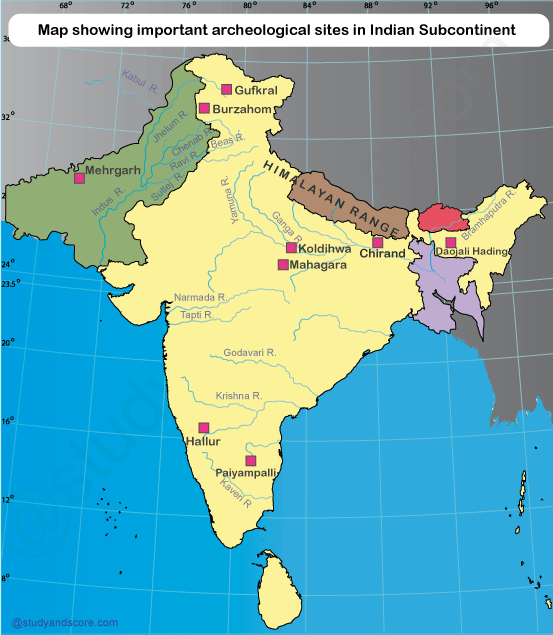
| Crops | Animals | Site location |
|---|---|---|
| Wheat, barley | Sheep, goat, cattle | Mehrgarh (in Pakistan) |
| Rice | Fragmentary animal bones | Koldihwa (in Uttar Pradesh) |
| Rics | Cattle (hoof marks on clay surface) | Mahagara (in Uttar Pradesh) |
| Wheat and Lentil | - | Gufkral (in Kashmir) |
| Wheat and Lentil | Dog, cattle, sheep, goat, buffalo | Burzahom (in Kashmir) |
| Wheat, green gram, Barley | Buffalo, ox | Chirand (in Bihar) |
| Millet | Cattle, sheep, goat, pig | Hallur (in Karnataka) |
| Black gram, millet | Cattle, sheep, pig | Paiyampalli (in Andhra Pradesh) |
Link to Solutions on this topic
- Share with your friends! -
Login to post your comment here...
- or with social Account -